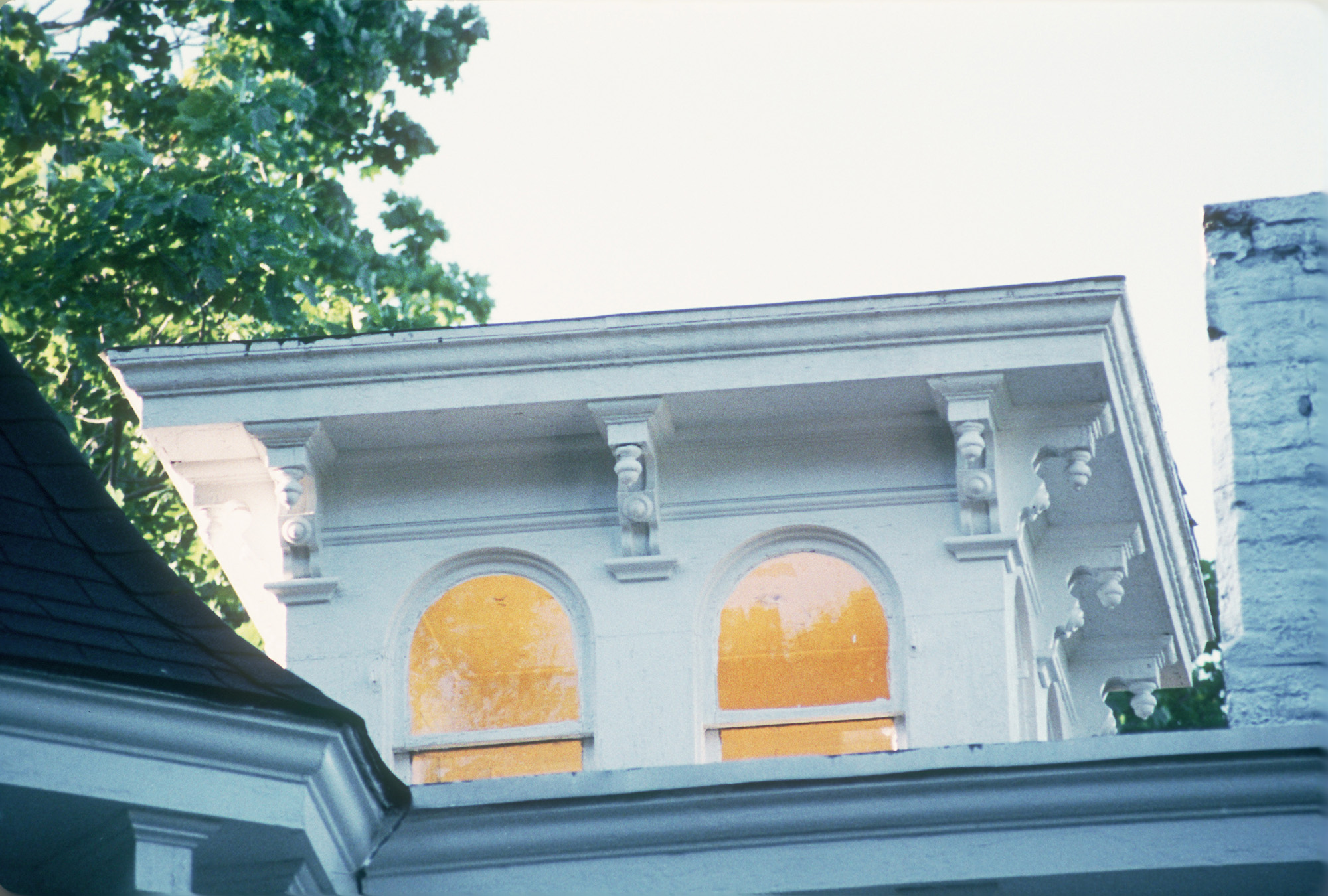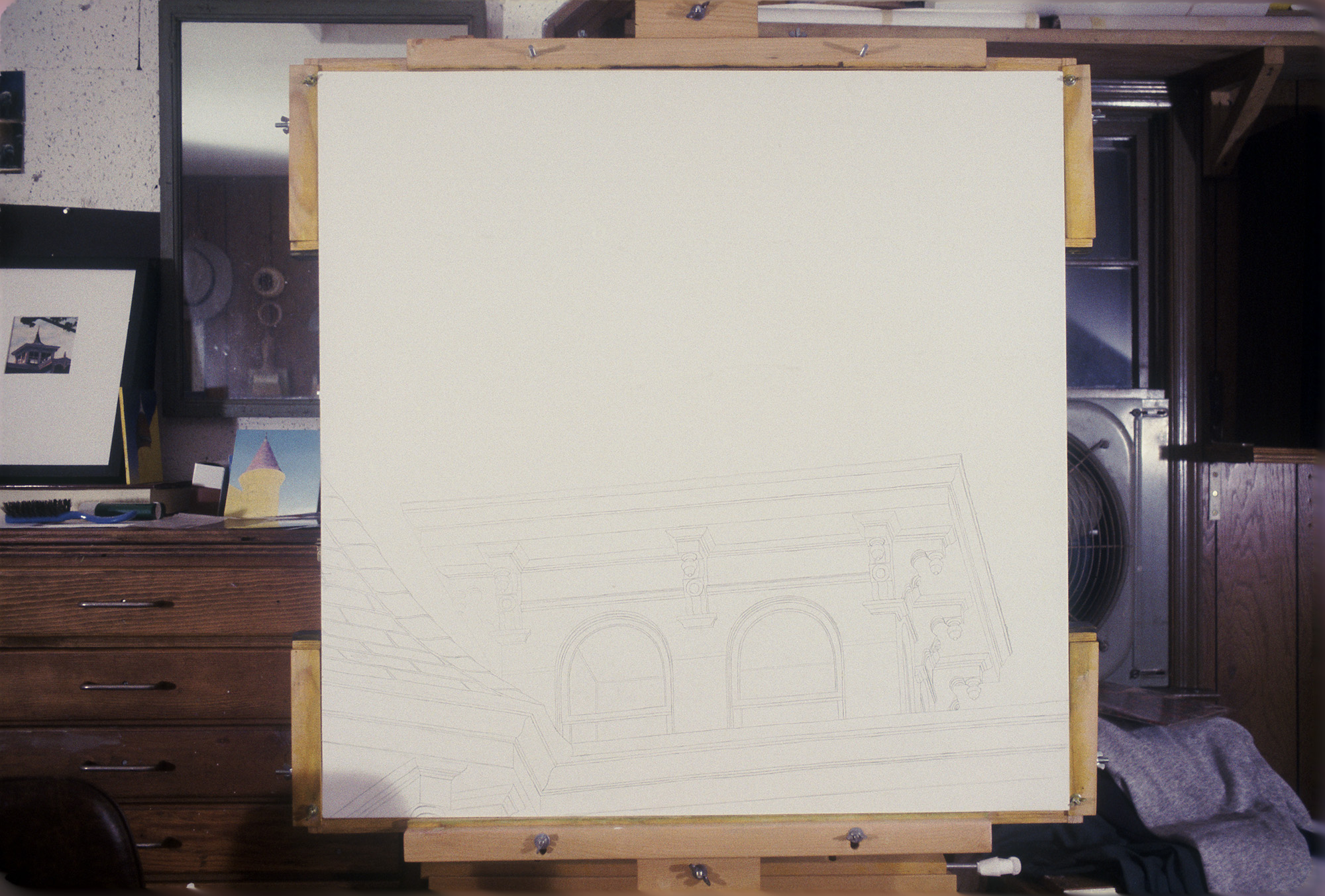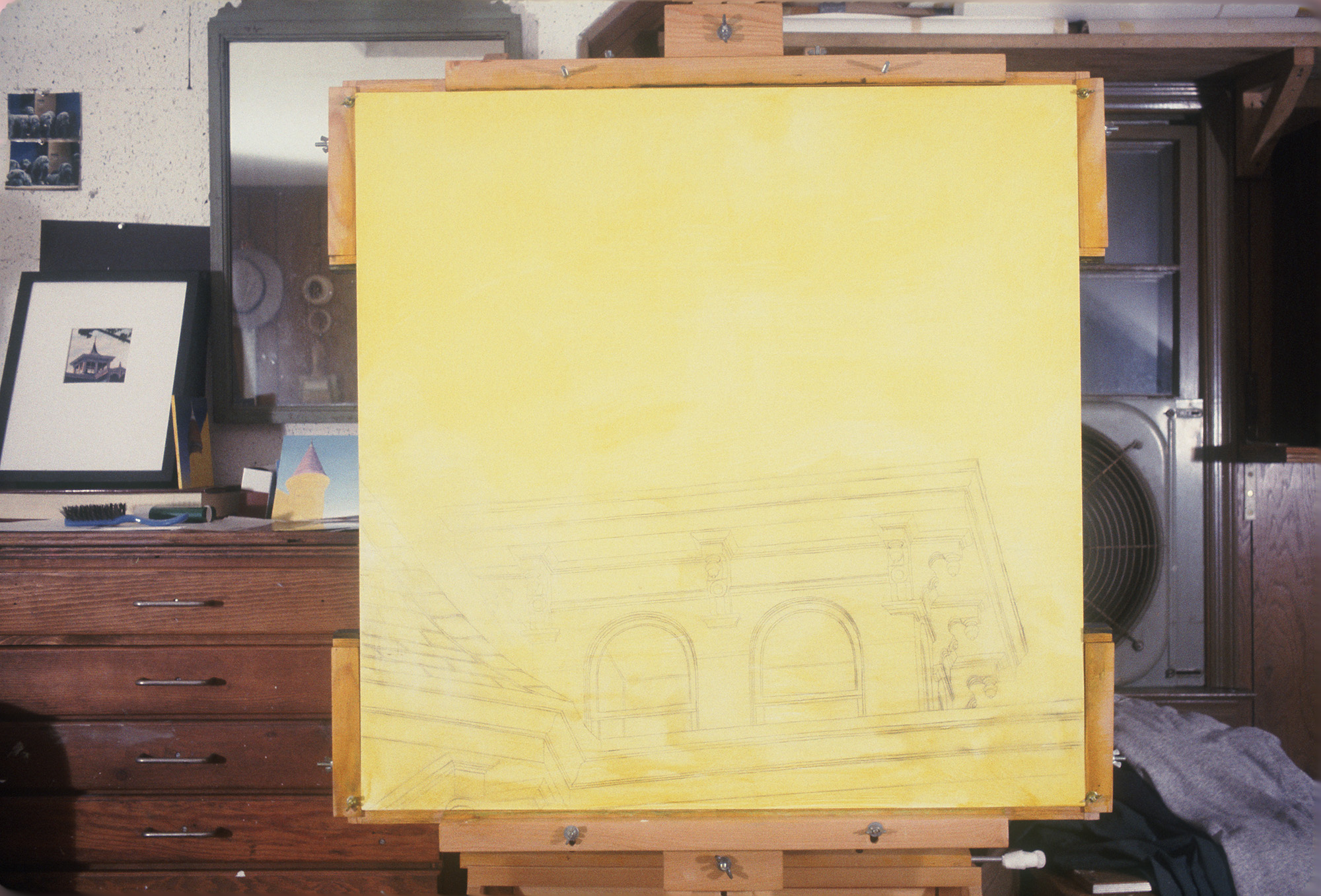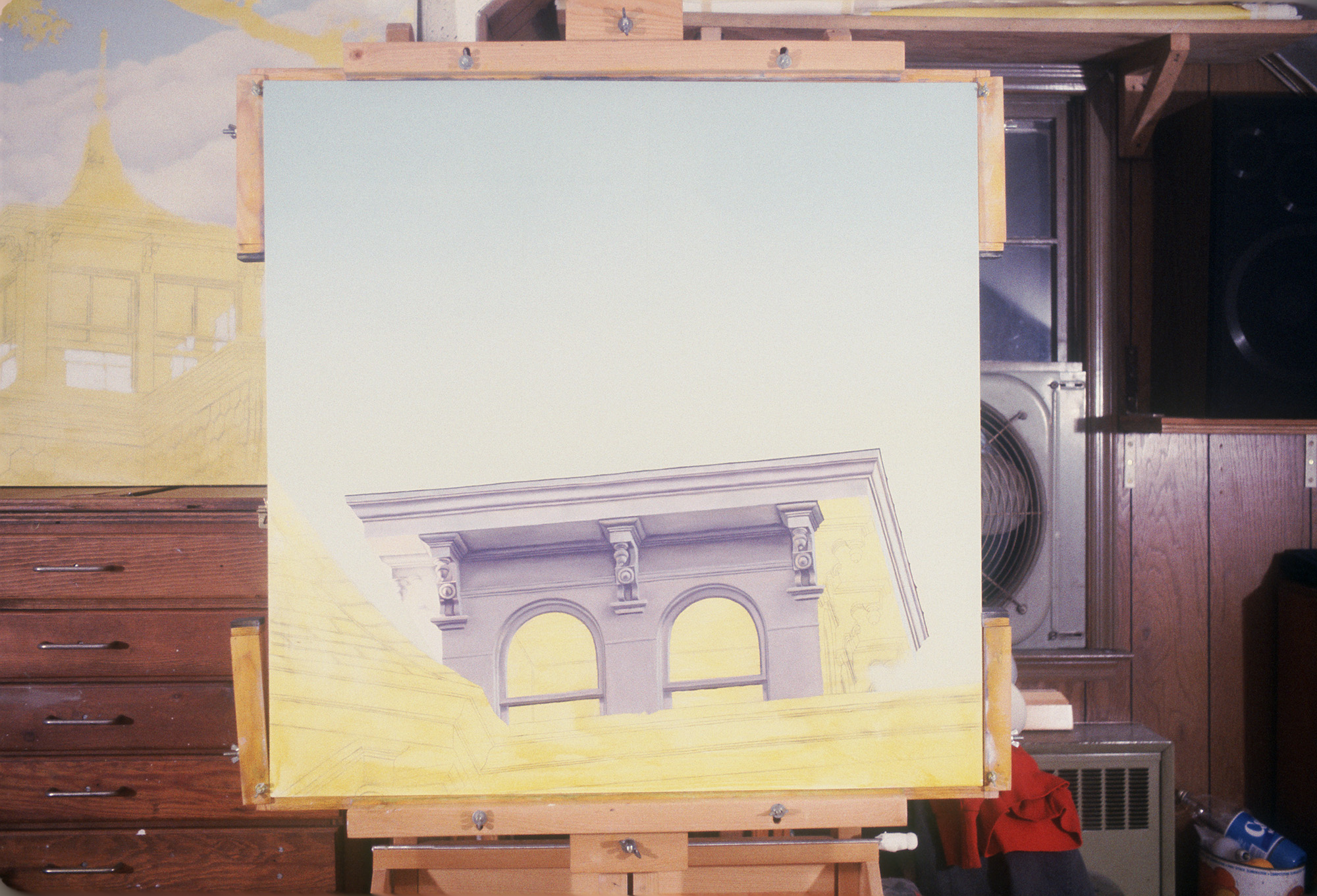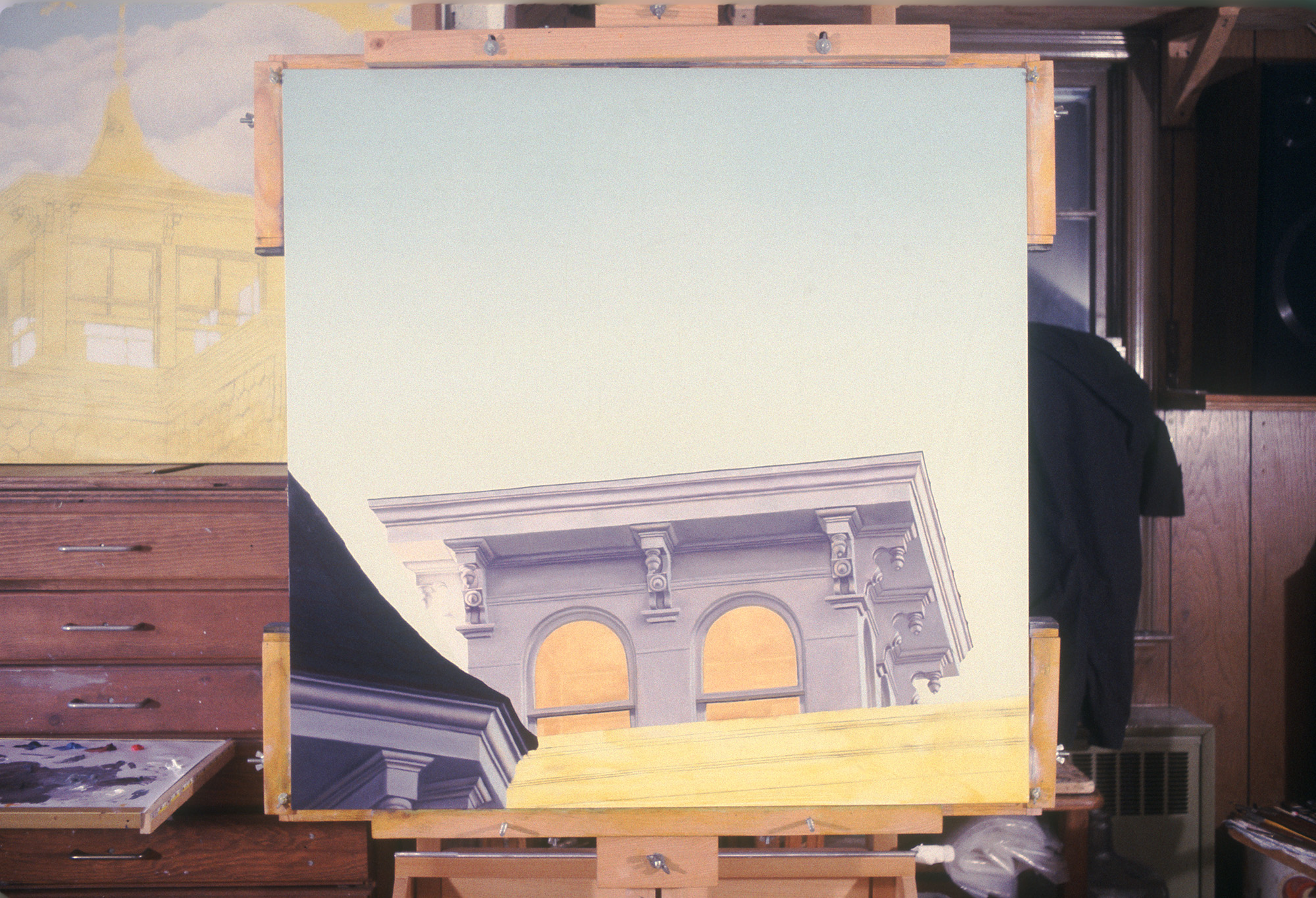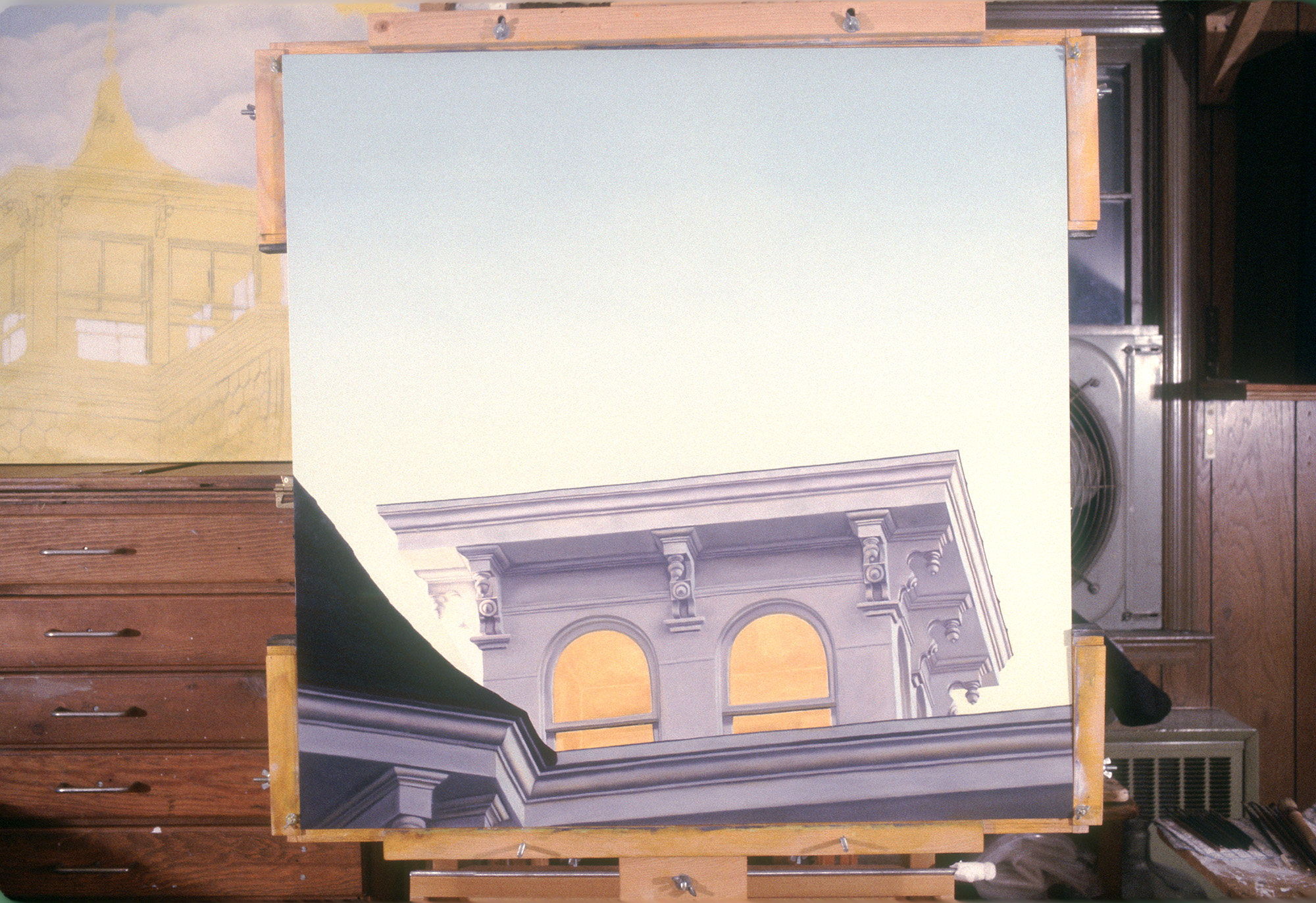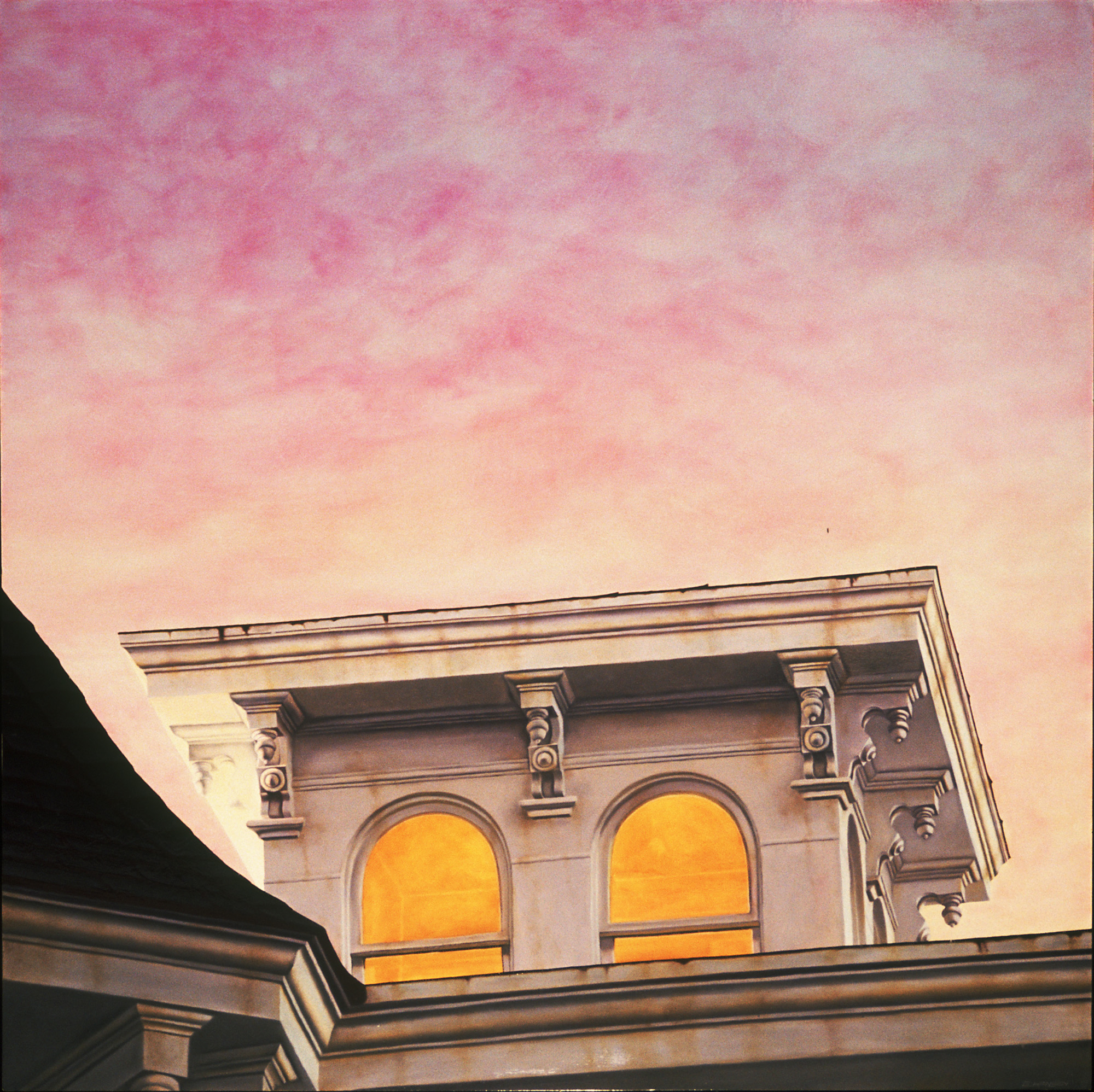”Isolating Details in a Landscape” By Glen Hansen
From "American Artist", December, 1990
"Not every landscape you paint needs to have trees, sky and flowers, sometimes limiting your vision to just a few objects, or details of those objects, allows you to create a more interesting picture.
For instance, I have been working on a series of drawings and oil paintings for the last few years that express my fascination with Victorian architecture by showing just a part of the buildings set against the sky. I could have painted the entire buildings and the land around them, but that wouldn't have accurately reflected my real interest. By focussing on just a few elements of the landscape, I have been able to generate a whole series of drawings and small (6" x 6" ) and large (36" x 36" and 48' x 48") oil paintings.
I have always been fascinated with ornately decorated buildings. In particular, I like the cupolas, or widow's walks that are built on the roofs of many of the Victorian homes as well as the rounded turrets at the corners of the structures. I find these buildings in Connecticut and u the town where I grew up on Long Island, New York. I make graphite sketches of the structures in a small sketchbook and take photographs (slides and prints) of them at different times of the day so that I have records of the patterns of sunlight and shadow.
When I am back in my New York City studio, I evaluate the sketches and photographs and decide which is the best way to make a picture of a particular building. I crop the image in various ways and try different lighting situations in order to find the most appealing presentation. I want an interesting relationship to exist between the buildings and the sky, and sometimes I invent a pattern of clouds or completely eliminate the clouds that are in my sketches and photographs.
I then make a detailed 6" x 6" graphite drawing of the building and sky as a way of further resolving and refining my ideas. I really get to know the building while I am making the drawing, and that helps me when I move on to the oil paintings.
I prepare panels for the small and large oil paintings by applying teem different layers of acrylic gesso to sheets of untempered Masonite using a six inch putty knife. The layers are smoothed with wet sandpaper after each application has dried so that the surface of the panel ends up smooth as glass. The panels are braced with a frame made from 1 1/2" x 1 1/2" lumber, and the outside edge of the frame is gessoed and sanded to a smooth finish.
To get the image onto the surface of the gessoed panel, I use the grid method. A one inch grid is drawn on the photographic reference, and the grid is scaled up on the gessoed panel.
Once the drawing is completed, I tone the surface of the panel with Windsor and Newton Indian yellow paint thinned with turpentine. I like the glow Indian yellow gives to a painting, and I use it to tone all my panels, applying it thinly enough for the lines of the drawing to show through clearly.
After the toned panel has been allowed to dry for at least two weeks, I begin painting the sky areas using oil colors straight out of the tube.
Even though I refer to my photographs while I am painting, I don't copy them exactly. I make up my own palette of warm colors for the sunlit areas of the building and cool colors forthe shadow areas.
One of the most important parts of the painting process occurs after the sky and building have been completely detailed and the oil paint has dried thoroughly. I lay a glaze of color over the entire panel. That glaze is made by mixing Maroger medium with several of my favorite transparent colors, including, raw sienna, permanent Rose, olive green, alizarin crimson, dioxazine purple, transparent orange, or ultramarine blue.
I follow these procedures for both the small and large oil painting although the size of the larger panels allows for greater detail in the buildings and a more subtle modulation of the glaze tone.
With the exhibition of my work now on display at my New York City gallery (Helio Galleries), my series of Victorian buildings has been completed. I am now developing drawings for a series of round paintings of some of the freestanding clocks in New York City. These clocks have the same kind of decorative detailing as the buildings, and I expect to show them against the sky. The big difference of course, will be the round format of the pictures.
